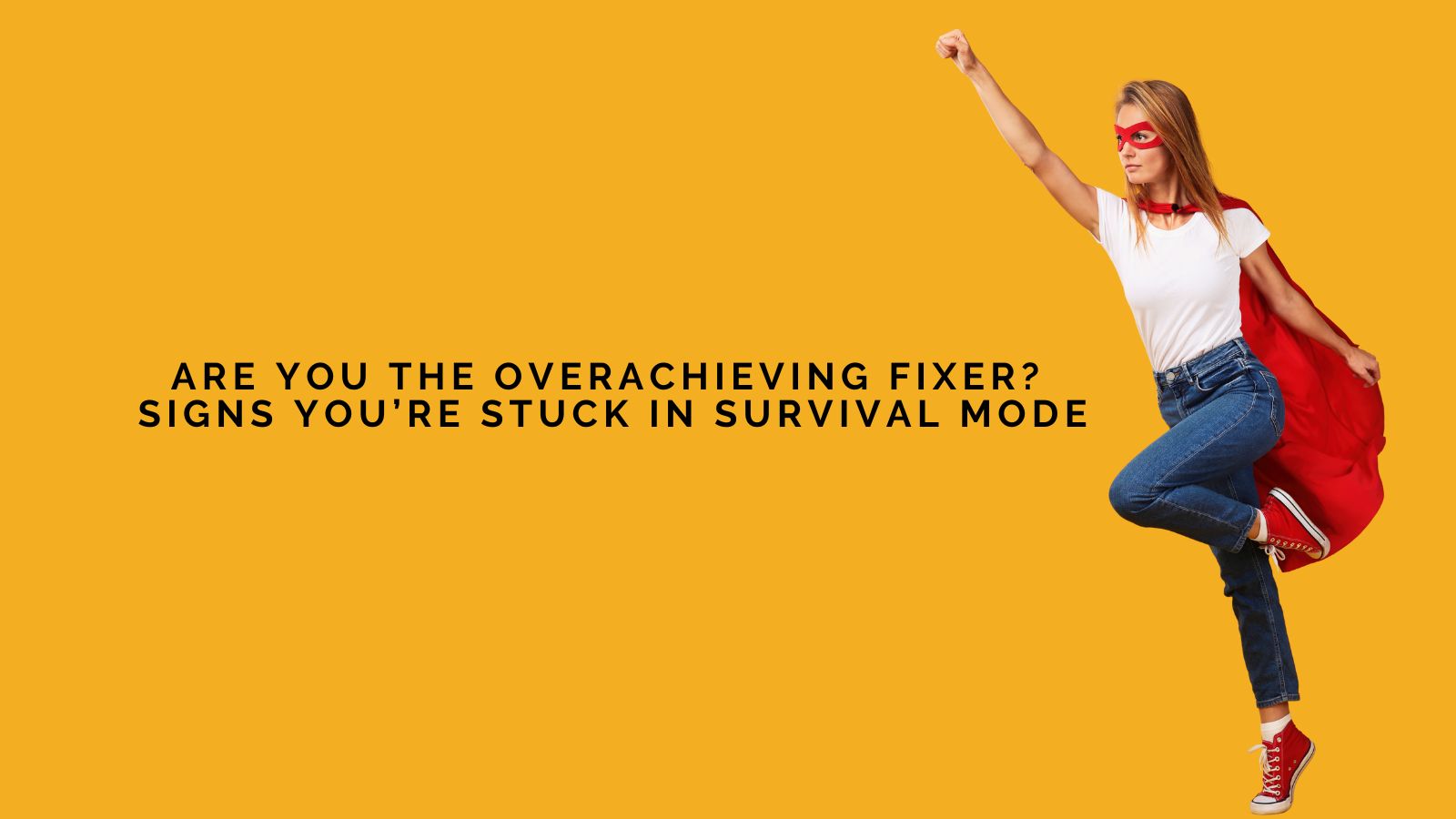
She’s the one everyone depends on.
The one who shows up with the casserole before you even think to ask.
The one who stays late at work to help a colleague finish their project, even though her own plate is overflowing.
The one who listens patiently on the phone while a friend rants for an hour, even though she hasn’t eaten all day.
She looks like a saint.
But here’s the raw truth: the Overachieving Fixer is silently drowning.
Behind the smile, she’s exhausted, resentful, and wondering why no one ever shows up for her the way she shows up for them.
This is survival mode. And it’s not kindness, it’s fear wearing a cape.
Who Is the Overachieving Fixer?
The Fixer is a woman who learned early on that her value came from being useful.
Maybe she was the “responsible one” in a chaotic household, stepping in to care for siblings or soothe volatile parents.
Maybe she was the child who felt invisible until she achieved something or made herself indispensable.
Maybe she was taught, directly or indirectly, that love had to be earned through sacrifice.
Now, as an adult, she’s turned helping into an identity.
She’s the friend who says, “I’ve got it,” even when she doesn’t.
She’s the colleague who can’t stop volunteering.
She’s the family member who holds everyone together while falling apart herself.
From the outside, she looks selfless.
Inside, she’s tired of being needed—but terrified of not being needed.
Why Fixing Is Actually Survival Mode
Let’s be real: fixing looks noble. Society claps for her. Employers reward her. Family leans on her.
But here’s the truth she doesn’t want to admit: she’s not always helping out of love. She’s helping out of fear.
-
Fear of rejection if she says no.
-
Fear of conflict if she stops over-functioning.
-
Fear of facing her own emptiness if she isn’t solving someone else’s problems.
Her nervous system is trained to believe: “If I’m not useful, I’m not safe.”
That isn’t compassion. That’s survival.
The Cost of Being the Fixer
The Fixer pays dearly for her cape.
She’s the one who cancels her own plans to rescue someone else—but no one cancels for her.
She’s the one lying awake at 2 a.m., replaying everyone else’s problems while ignoring her own.
She’s the one silently resenting the people she “helps” because deep down, she wishes someone would just help her.
The cost? Exhaustion. Burnout. Resentment. And worst of all, a deep disconnection from herself.
Because when you’re busy fixing everyone else, you never have to ask: “What about me?”
Phase 1: Self-Awareness, Naming the Pattern
The first crack in the Fixer’s identity comes when she admits:
“I use other people’s problems to avoid my own.”
That’s brutal honesty. And it’s the kind of honesty survival mode hates.
Self-awareness looks like:
Realising you say yes automatically, even when it hurts you.
Recognising you feel anxious when you’re not needed.
Admitting you don’t even know what your own needs are.
Noticing how resentful you feel when your sacrifices aren’t appreciated.
This is the mirror moment—when the Fixer sees that her “kindness” is often self-abandonment in disguise.
Phase 2: Reprogramming, Rewriting the Script
The Fixer’s script says: “I am only valuable when I am helping.”
Reprogramming means burning that lie to the ground.
Here’s how it starts in practice:
When a friend asks for a favour, instead of the automatic “yes”, pause and check in with yourself. Ask: “Do I actually want to do this?”
When a colleague tries to dump extra work on your desk, practise saying: “I don’t have the capacity right now.” Period. No apology.
When you feel the urge to jump in and solve someone’s problem, try asking: “Do you want advice, or just someone to listen?”
Each disruption creates a new script: “I am worthy even when I’m not fixing.”
The nervous system fights this at first. It will whisper, “They’ll be mad at you. They’ll leave you. You’re selfish.”
But the more you practise, the more your body learns the truth: you are still safe even when you’re not carrying everyone else.
Phase 3: Reinvention, Living as the Future Self
Reinvention for the Fixer means trading her cape for balance.
It means she learns to show up for others without disappearing in the process.
She begins choosing relationships that feel mutual, not one-sided.
She starts pouring energy into her own passions, instead of only fuelling other people’s lives.
She allows herself to rest, not just when everything else is done, but because she deserves it.
The reinvented Fixer doesn’t stop caring. She just stops carrying what was never hers.
She realises:
“I am lovable without being useful. I can say no and still be worthy. I don’t have to rescue others to rescue myself.”
Why This Matters
The Overachieving Fixer is celebrated by society but destroyed by it, too.
We cheer her on as she gives and gives, but we rarely ask what it’s costing her.
And until she chooses to stop equating love with usefulness, she will stay trapped in a cycle of exhaustion and resentment.
But when she breaks free? She’s unstoppable.
Because the same energy she once poured into fixing everyone else can finally be poured into building a life she actually loves.
The Takeaway
If you see yourself in the Fixer, I want you to know this:
You are not a machine built to solve everyone else’s problems.
You are a human being with your own needs, your own desires, your own right to peace.
Helping isn’t bad. But when it costs you yourself, it’s no longer love—it’s survival.
So put the cape down.
Let people solve their own mess.
And start turning all that fixer energy back toward yourself.
Because the greatest fix you’ll ever make…
Is finally fixing the lie that you had to disappear to be worthy.
_(64).jpg)



 (64).jpg)







